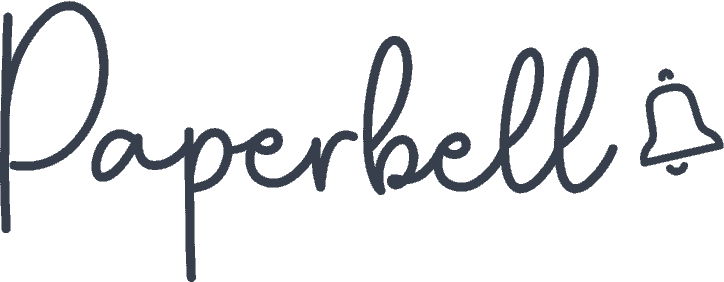You know you’re a top-notch coach with expertise that could change lives. So, why aren’t the rave reviews flowing in as you start to share that expertise via your podcast?
Here’s the kicker: being an amazing coach doesn’t necessarily mean you’ll be a hit podcaster.
Content overwhelm is real for everyone. Harnessing the full potential of your coaching podcast requires more than just insightful conversations; it demands a strategic and engaging content approach.
In order to boost engagement, build trust, and elevate your brand’s digital presence, the key is a successful podcast content strategy.
So, in this post, we’ll answer everything you need to know, including:
- Why do you need a content strategy for your coaching podcast?
- How to create a podcast content strategy
- Podcast content strategy FAQs
Why Do You Need A Content Strategy For Your Coaching Podcast?

If you’re a coach and haven’t considered podcasting, you might miss out on an opportunity to uniquely connect with your audience. But just creating a podcast isn’t enough – having the right content strategy can make all the difference.
A solid content strategy for your coaching podcast is like a road map. It guides where you want to go and how to get there. Without it, reaching your target audience becomes challenging, even if you have excellent content.
Imagine trying to build something without instructions or blueprints – chaotic, right? That’s what creating podcasts without clear planning feels like.
1. It helps ensure you’re putting your target audience first
To create compelling content that resonates with listeners, understanding who they are is essential. Just as coaches need to understand their client’s needs and goals better to help them, podcasters must know their audiences well.
But it’s hard to do everything all the time. You probably wear many hats as a solopreneur or coach with a small team. That’s why mapping out your content pillars and topic ideas into a content strategy will help you stay organized and create high-quality content, even during your busiest times of the year.
Your chosen topics should answer your potential clients’ questions about coaching or provide insights into areas of interest related to your niche.
2. It will increase engagement and conversion
A planned approach allows us not only to attract but also to engage our target audience effectively.
An engaged listener often turns into an interested client. Good content gives value before asking for anything in return; this builds trust, increasing conversion rates over time.
Think about it in terms of your own investments so far. How many coaches or courses have you considered investing in, but you listen to their podcasts or binge their written content before investing? Probably a lot.
This is what potential clients will do with your podcast, too, so you want to ensure you’re strategic.
3. It makes your drops predictable – and that leads to retention
Scheduling consistency keeps listeners returning for more because they know when new episodes will drop.
You know that you’re going to watch The Bachelor every Monday night, right? Or perhaps you have a favorite YouTube personality who uploads every Friday. You can create the same anticipation and schedule when you have a solid content strategy that maps out what day of the week you’ll release your new episodes.
This helps maintain existing relationships while attracting new ones, too.
The ultimate goal? To convert this loyal audience into paying clients.
4. It helps you establish your brand
There’s a lot of noise in the coaching industry right now, and many messages are seemingly similar. It’s important to remember you are your own brand as a coach, and your podcast will help you establish and differentiate yourself.
Hearing your voice telling your story or coaching them through a tough time will drive connections much deeper than a simple social media post.
The foundation of every brand today is connection – and that’s what a podcast content strategy will help you focus on building. It’s something to return to when you get overwhelmed and need to get back on track.
5. It helps you monetize
Not only does an effective content strategy help monetize in terms of nurturing your future clients, but you can also monetize the podcast itself to create new revenue streams.
Remember, 65% of millionaires have at least three streams of income. And podcasting can be quite lucrative if it’s strategically approached.
Take a look at your list of potential podcast episodes and think about what sponsors may want to get in front of an audience listening to those topics.
Have your VA reach out and start gaining some podcast sponsors! See what resonates with your target audience and add sponsorship to your podcast content strategy.
How To Create A Successful Podcast Content Strategy
A podcast content strategy is your game plan for success. Let’s jump into the specifics, step-by-step.
1. Understand your target audience
To craft a successful podcast, you must understand your listeners. Knowing your audience lets you create relevant and valuable content they’ll love.
Start with the existing audience you have on your social media channels, and your email list, and check your Google Analytics traffic reports. This should give you a good idea of who is listening, where they’re tuning in from, how they’re finding you, etc.
Then, to take it a step further, you can even poll your existing audience.
Send a survey out via email with questions about what they’re interested in learning more about, and draw for a $50 Amazon gift card for those who respond.
Then, go to social media. Go through your DMs and see what your current audience asks you about. Maybe even post a new “ask me anything” chat box to see what common questions you can pull into your podcast content strategy.
You want to think about this with every step of investigating your target audience:
What real-life problems can I solve for my audience for free on the podcast that may lead them to buy from you in the future?
You don’t have to overthink this, either. Look at this super-simple email I received from coach Karla Marie:

Remember – this is a nurturing tool! You can use these responses to start genuine conversations with potential clients and even offer to help them further if they need your help.
2. Do competitor research
After looking at your loyal following, it’s time to peek at your competitor’s podcasts.
Create a competitive analysis Google Doc and answer the following questions for at least five other podcasts:
- What are the recurring topics?
- Do they have the same format or mix it up (i.e., solo episodes, interviews, etc.)?
- How frequently do they release new podcasts?
- Does their marketing strategy span multiple platforms or focus on one?
- What episodes do they seem to have the most audience engagement on?
- What podcast directories do they list their podcast on? Are they on more than Apple Podcasts and Spotify?
- Do they release audio content only or video, too?
- What do you like about their podcast? Think cover art, content, length, format, etc.
- What don’t you like about their podcast? Think cover art, content, length, format, etc.
Then, use that information to help create clear objectives for yourself.
3. Decide on your content pillars and fill in with some topics
Take the information you gather as you talk to your existing audience, research your competitor’s audiences, and narrow it down.
If there’s one thing I’ve learned from the most successful podcasts, it’s this: quality trumps quantity every time. Don’t feel pressured to churn out episode after episode if they’re not offering value to your audience. This step is important, so take your time.
Decide on a few key content pillars you and your audience will find supportive. Then, under each content pillar, list relevant topics you can turn into an episode plan.
For example, if you’re a life coach who focuses on healing after divorce, you can start here:
Content pillar: Emotional healing
Topics:
- Understanding and managing emotions after divorce
- Coping strategies for dealing with grief and loss
- The importance of self-compassion and self-care
Content pillar:
- Financial empowerment
Topics:
- Budgeting and financial planning post-divorce
- How to start investing in professional development
If you’re struggling with topics, ask ChatGPT to help. You can use a prompt like:
What content pillars can a life coach focus on healing after divorce use for her podcast? Provide five pillars and corresponding topics for each.
You can also do keyword research to see what is trending using a tool like Google Trends or Answer the Public.
4. Create your episode plan
Now for the fourth step. You have a solid target audience and content ideas; it’s time to start mapping it all out.
Your episode plan should include:
- How many episodes you want per season or month
- What length each episode will be – give yourself a time limit
- The type of format (interviews, solo talks)
- Will you do video podcasts and post on YouTube or just audio
It gives structure to your work and sets expectations for listeners.
From there, map out your first season and get recording! You got this.
5. Promote each episode intentionally
The final step is getting that perfectly planned podcast content strategy out into the world. You’ve created fantastic content; now, let’s get people listening.
Just as you plan your digital marketing strategy for a new course launch or your coaching spots opening, do the same for each and every podcast episode.
Once you get in a groove and people know what to expect, they’ll look for your weekly drops, and it all becomes easier.
You can also start your own social accounts for the podcast to grow separately from all your coaching content, as the Mel Robbins Podcast and many others do.

Check out our blog with the full step-by-step guide for promoting your podcast for actionable tips and tricks you can use!
A Solid Podcast Strategy is Not As Hard to Create as You Believe
A well-crafted podcast content strategy is not just a luxury but a necessity for coaches who want to extend their reach and impact more lives. Armed with the right information, you are now ready to begin crafting your own podcast strategy.
You might stumble along the way—forgetting an important point during recording or struggling with editing software—but don’t let these challenges discourage you. Remember why you decided to start your coaching podcast.Need help streamlining the admin side of your coaching business so you have more time to focus on your podcast content strategy? With Paperbell, running a coaching business online has never been easier! Try it for yourself by claiming your free account.










